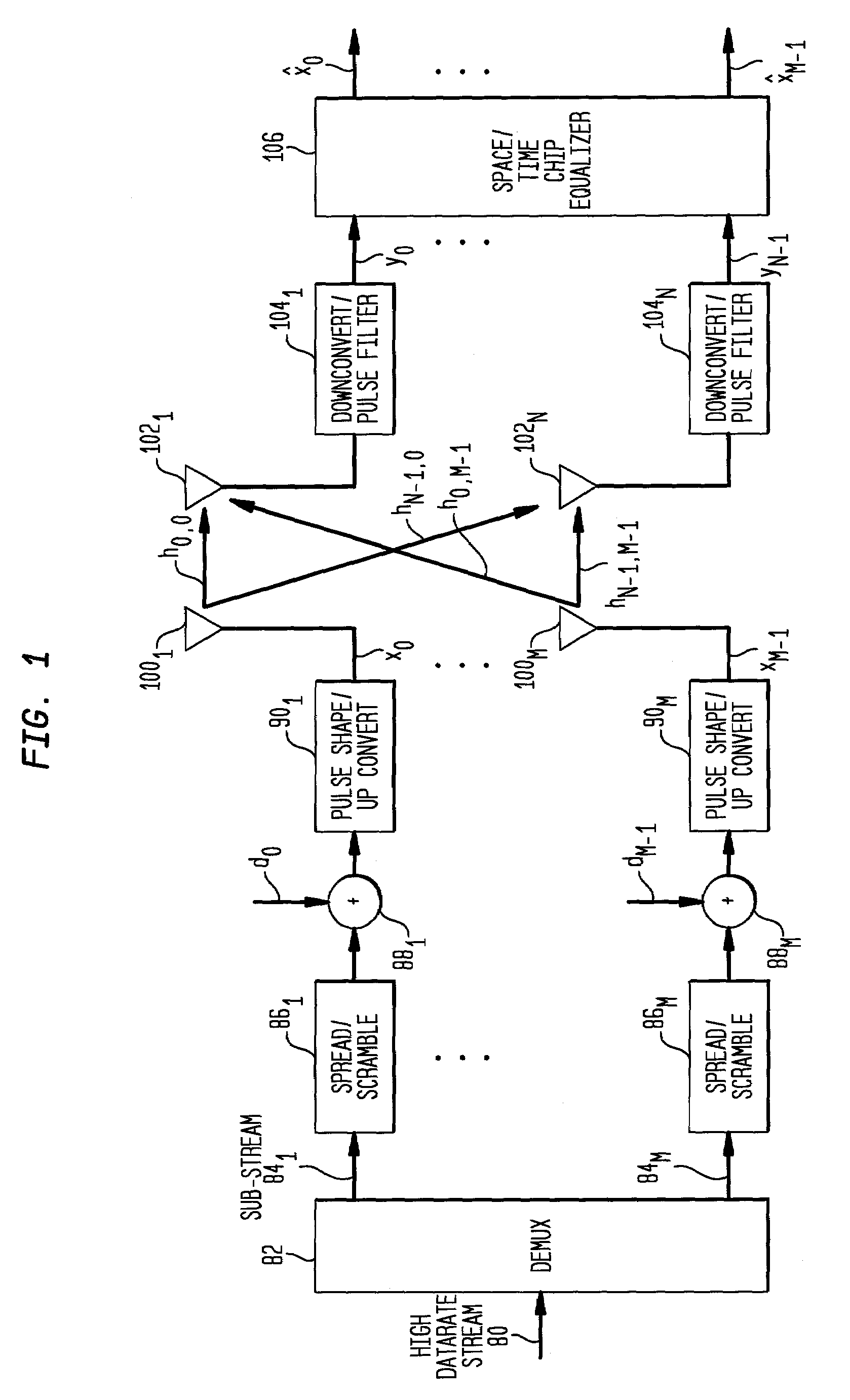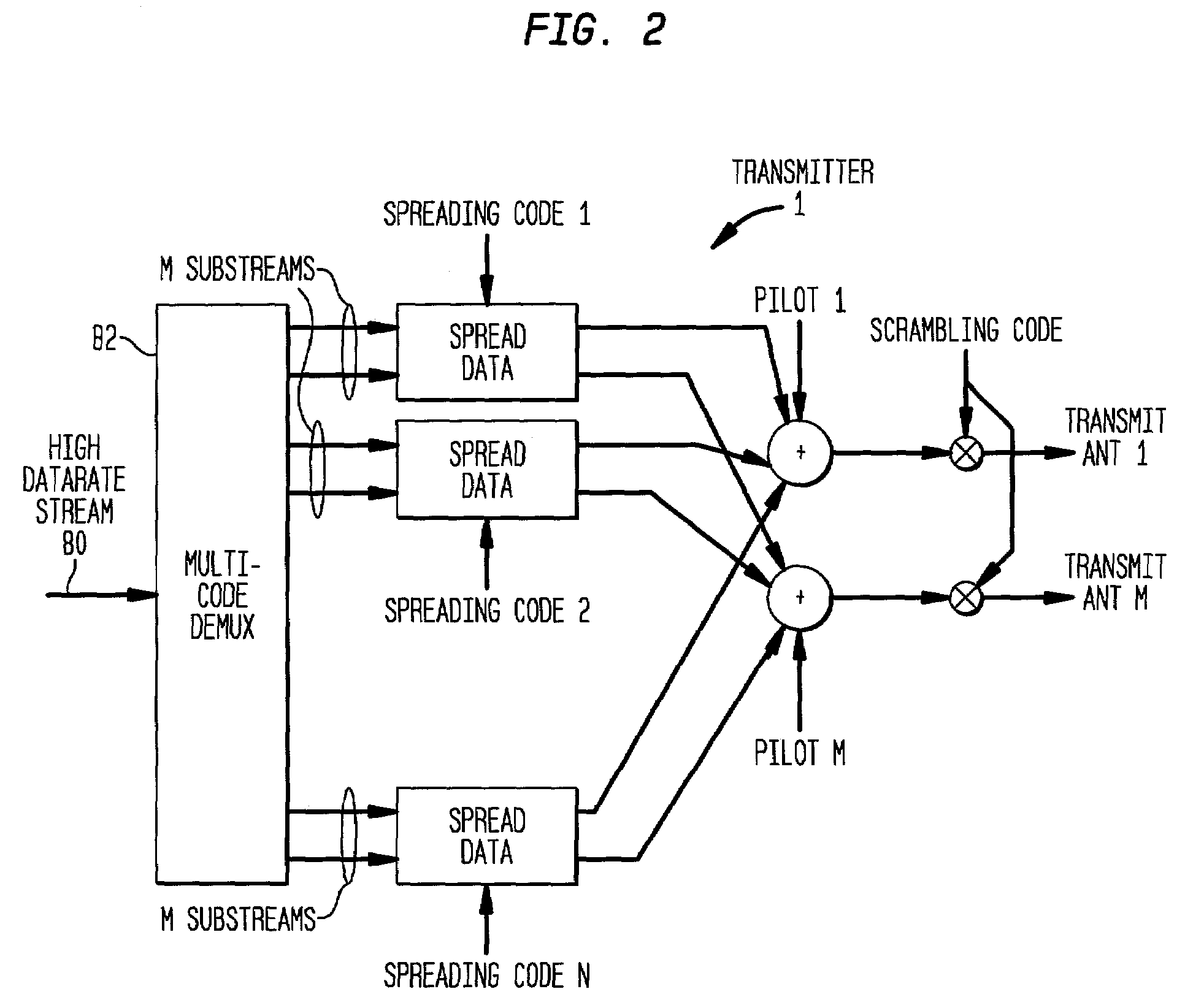Equalizer and method for performing equalization in a wireless communications system
a wireless communication system and equalizer technology, applied in the field of wireless communications, can solve the problems of difficult design of ideal spreading codes, poor auto-correlation properties of spreading codes, and insufficient simple rake-based detection, so as to reduce adaptation noise
- Summary
- Abstract
- Description
- Claims
- Application Information
AI Technical Summary
Benefits of technology
Problems solved by technology
Method used
Image
Examples
Embodiment Construction
[0026]The mathematical theory behind the various embodiments of the present invention will be discussed first, followed by exemplary implementation of the mathematical theory. The HSDPA mode of UMTS demultiplexes a high data rate stream to multiple streams at each of multiple transmit antenna. Each stream is assigned a different spreading sequence, and each transmit antenna uses a unique scrambling code. It is assumed that each data stream is transmitted with the same power. Furthermore a unique common pilot channel (CPICH) code is added at each transmitter. Thus, the base and signal transmitted from antenna m, m ε{0, . . . , M−1}, may be represented by
[0027]xm(i)=∑k-oK-1xm,k(i)+Apdm(i)(1)
where K spreading codes are used, xk(i) is a chip sequence (after spreading and scrambling), Ap, is the relative pilot amplitude and d (i)=[do(i) . . . dM−1(i)] are the scrambled pilots at time i.
[0028]FIG. 1 illustrates the UMTS operating in the HSDPA mode in accordance with one exemplary emb...
PUM
 Login to View More
Login to View More Abstract
Description
Claims
Application Information
 Login to View More
Login to View More - R&D
- Intellectual Property
- Life Sciences
- Materials
- Tech Scout
- Unparalleled Data Quality
- Higher Quality Content
- 60% Fewer Hallucinations
Browse by: Latest US Patents, China's latest patents, Technical Efficacy Thesaurus, Application Domain, Technology Topic, Popular Technical Reports.
© 2025 PatSnap. All rights reserved.Legal|Privacy policy|Modern Slavery Act Transparency Statement|Sitemap|About US| Contact US: help@patsnap.com



